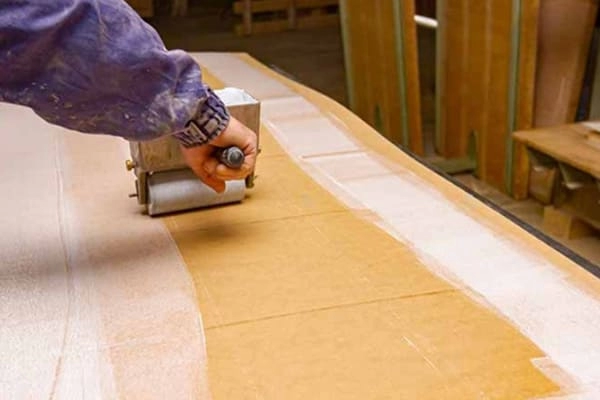Plywood is a ubiquitous material used in construction, furniture making, and various other industries due to its strength, versatility, and cost-effectiveness. One of the key components that give plywood its structural integrity is the glue used to bond the layers of wood veneer together. However, plywood glue is not just any ordinary adhesive; it is a carefully formulated compound enhanced with various additives to improve its performance and durability. In this article, we explore the different additives mixed in plywood glue and their roles in ensuring that plywood remains reliable in many applications.
The Basics of Plywood Glue
Plywood is made by layering thin sheets of wood veneer, with each layer’s grain running perpendicular to the one above or below it. These layers are then bonded with glue under high pressure and temperature to form a strong, stable panel. The glue used in this process must provide strong adhesion, resist moisture, and withstand environmental stresses like temperature fluctuations and humidity.
The base of plywood glue is typically a resin, most commonly a urea-formaldehyde (UF) or phenol-formaldehyde (PF) resin. These resins are chosen for their strong adhesive properties, quick curing times, and cost-effectiveness. However, to further enhance the glue’s performance, various additives are mixed in.
Key Additives in Plywood Glue
1. Hardening Agents
Hardening agents, also known as curing agents, are added to plywood glue to accelerate the curing process. These agents ensure that the glue hardens quickly and consistently, which is essential for the efficient production of plywood. Ammonium chloride is a common hardening agent used in urea-formaldehyde glues. It reacts with the resin to initiate a chemical process that solidifies the glue, creating a strong bond between the layers of veneer.
2. Fillers
Fillers are materials added to plywood glue to increase its volume and reduce its cost without compromising the adhesive strength. Common fillers include wood flour, sawdust, and other finely ground wood products. These filters also help improve the gap-filling properties of the glue, making it more effective in bonding uneven surfaces or veneers with minor defects. Additionally, fillers can contribute to the overall stability of the glue, ensuring that it remains effective even under stress.
3. Water-Resistant Additives
One of the critical requirements for plywood, especially when used in exterior applications or in environments with high moisture levels, is water resistance. To enhance the water resistance of plywood glue, various additives are incorporated into the resin. These additives include melamine and phenol compounds, which chemically bond with the resin to create a more water-resistant adhesive. Phenol-formaldehyde resin, in particular, is known for its excellent water resistance and is often used in plywood intended for outdoor use, such as marine plywood.
4. Plasticizers
Plasticizers are added to plywood glue to increase its flexibility and workability. These additives make the glue easier to apply and spread, ensuring that it evenly coats the veneer layers. Plasticizers also help prevent the glue from becoming too brittle after curing, which can be particularly important in applications where the plywood might experience slight flexing or movement. Common plasticizers include phthalates and other organic compounds that soften the resin, allowing for better manipulation during the manufacturing process.
5. Preservatives
To ensure the long-term durability of plywood, especially in environments prone to fungal growth or insect infestation, preservatives are added to the glue. These additives help protect the plywood from decay, extending its lifespan. Common preservatives include fungicides and insecticides that are mixed into the glue, providing a protective barrier against biological threats. This is particularly important for plywood used in outdoor or high-humidity environments where the risk of decay is higher.
6. Stabilizers
Stabilizers are additives that help maintain the chemical and physical stability of the plywood glue during the manufacturing process and throughout its lifespan. They prevent the glue from breaking down under heat, light, or chemical exposure, ensuring that the bond between the veneer layers remains strong over time. Stabilizers can include antioxidants, UV inhibitors, and other chemicals that protect the glue from degrading due to environmental factors.
Conclusion
The glue used in plywood production is a sophisticated mixture of resins and carefully selected additives, each playing a crucial role in ensuring the final product’s strength, durability, and versatility. From hardening agents that speed up the curing process to water-resistant additives that protect the plywood in harsh environments, these additives make plywood a reliable material for a wide range of applications. Understanding the components of plywood glue offers insight into why this engineered wood product continues to be a staple in construction and manufacturing industries worldwide.
Post time: 08-21-2024












